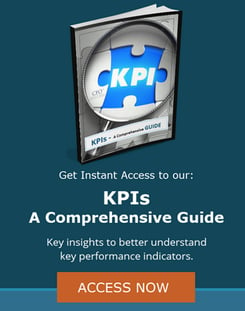
There’s nothing wrong with taking your business in a different direction. Some of the world’s most successful companies started out doing one thing and ended up succeeding at something else. Cell phone giant Nokia began as a rubber bootmaker, and oil conglomerate Shell was an importer of actual seashells.
You can certainly reinvent yourself at any time, and sometimes it’s the best idea to guarantee success and longevity. But have you considered all of the risks and possibilities as you plan your roadmap for the next chapter of your organization’s growth?
Let’s look at a hypothetical situation. One business partner wishes to step away from the company but has some trepidation about making the move. At the same time, the other partner wants to take the business in a different direction that pursues a complimentary service and one of their passions. Before making these life-altering and major business choices, it’s a good idea to step back and carefully consider your options.
Is Your Business Stable? Get an Assessment!
“Make sure your house is in order first; then you can build a new one.” – Becky Todd
Whether you wish to make some radical changes or not, it helps to have a good handle on where you are currently so you can create an effective strategic plan for future growth. One of the best places to start is with a Finance & Accounting Risk Assessment.
This deep dive into your company’s finances will give you a better idea of what’s working and where your challenges are, if any. You’ll get a score related to a long list of best practices as well as a scaled assessment of your risk in several key areas, including Operations, Accounting, Budgeting, Innovation, and Profit Optimization.
What is Your Vision for the Future?
As a business owner or partner, you’ve no doubt worked incredibly hard to create a successful organization. But that doesn’t mean what you have is “good enough.” In truth, businesses that don’t continue to evolve are more likely to be beaten by the competition or die a slow death for any number of reasons.
To prevent something terrible from happening, and to keep the owners, staff, and customers engaged, you’ll need to create a vision for the future. Where do you see your business in three, five, or ten years? Will you expand into new markets with additional products and services, open new locations, or go in an entirely different direction?
Let’s assume you have a successful business, but you and your partners are no longer engaged. You’ve identified another exciting opportunity that you’d like to pursue. The next step is to figure out what you’re going to do with your current business.
Develop an Exit Strategy for Your Current Business
Whether you want to take your current business in an entirely new direction, start something new, or walk away (as one partner in our previous example would like), you have options. Before you make any moves that will impact the business owners, your staff, business partners, and your customer base, you should develop a sound exit strategy. Here are a few choices:
Sell
If your plan is to walk away from your business and you aren’t particularly concerned about what happens to it, you can sell it to a third party. There are several options to do this, including a sale to another business or individual, a private equity sale to an investor, and even an IPO. This option requires considerable planning and lead time since there will likely be some substantial due diligence requirements before closing the sale.
Retain
If you are in a secure and stable marketplace with a business that is producing a steady revenue stream, you might decide to retain the company. You can choose a trusted manager or family member to run the concern as you focus on your next great idea. One advantage of this is that you can groom your successor, but the risk is that clients and customers may not approve of your changes.
Transfer
Another option is to transfer ownership to new partners or your current employees. This is an excellent choice for business owners that want to step away but have the business remain and preserve the existing culture of the business. Other advantages are that limited due diligence is required, and it protects the legacy of the company.
Liquidate
Maybe your current business isn’t going quite as planned. It’s not uncommon for entrepreneurs to scrap one business plan and start fresh with another. Liquidation is certainly an option but be sure to assess the implications of closing up shop entirely before making this choice. The advantage of liquidating is that it’s simple, but the downside is that it has a low return on your investment.
Assess the Viability of Your Plan
Once you have a plan, you’ll want to assess its viability before moving forward. Change for the sake of change isn’t necessarily a sound business choice. That said, there are countless tales of companies that have made both excellent and poor choices regarding shifting strategies and moving in another direction.
PayPal wasn’t established to run as you currently know the company. It was originally formed as a cryptography company, and, after a series of failures and issues with fraud, the company landed on becoming one of the world’s largest online payment systems. Likewise, Apple was on the brink of collapse in the 1990s, trying to sell everything from TV appliances to portable CD players. When Steve Jobs returned as CEO, the company refocused on high-quality consumer electronics, notably the iMac, iPod, and iPhone.
On the other side of the coin, camera giant Kodak invented the digital camera in 1975. But then decided it would be a “bad idea” to launch the revolutionary product because it might hurt its film division. So, the company sat on the sidelines for 15 years as its competitors gobbled up the market. You probably don’t want to be like those guys.
Your first step should be to thoroughly assess the viability of your new plan. This includes creating a business plan, assessment, forecast, budget, and proposed structure for your new business.
If you plan to keep your existing business, how will you ensure that it remains stable with your additional growth initiatives? Both companies must be able to stand on their own. If one is propping up the other, it’s not a viable strategy.
You should also decide if and how your two business ideas (or your two separate businesses), interact, if at all. Will you have a single company with two divisions, two separate and diverse companies, or only focus on the new endeavor?
Once you’ve answered these vital questions, it’s time to execute on your new business idea. If this is something that you are thinking about pursuing, there are a few more items you should put on your list before you begin working towards achieving your goals.
Consider These Items Before Your Assessment
Taking your business in a different direction is equal parts exciting and challenging. If you’re motivated to pursue something else because you’re “bored,” the cure might not be a new business idea. First, sit down and identify the reasons why you’re bored. You may be able to address these without radical changes to your business plan.
If you do decide to make a change, follow your passion. Obviously, it should be a viable business idea with a strong market, but you’ll enjoy your work much more when you’re passionate about what you do.
Finally, get some help. Surround yourself with good people and authorities at all stages - current management, business advisors in sales, HR, market, and financial strategists. When you’re ready to begin with a financial assessment of your current and proposed business, contact us to find out more about how CFO Selections can help you make these upcoming changes a success.
 If you're not sure about how to get started with an effective risk management program, or whether you have these risks covered, call us today for a risk assessment.
If you're not sure about how to get started with an effective risk management program, or whether you have these risks covered, call us today for a risk assessment.
A financial risk assessment can make all the difference for your business. Preparing to take advantage of opportunities and eliminate potential landmines makes good business sense.
Get instant access to our free finance and accounting risk assessment!
About the Author
 Becky Todd, Western Washington Practice Manager, CFO Selections
Becky Todd, Western Washington Practice Manager, CFO Selections
Becky is an experienced financial leader with over 20 years of experience in industries that include nonprofits, aviation, software, and retail. She has extensive expertise in helping small to mid-size companies and organizations gain control over their accounting/finance operations and apply their financial assets to support the accomplishment of key organizational objectives.
As the Western Washington Practice Manager for CFO Selections, Becky ensures the alignment of the right CFO consultant to client organizations. Becky can be reached at btodd@cfoselections.com.





